Home » Resources » Volunteer Resources » 4-H Foundations » Essential Elements of Positive Youth Development
Essential Elements of Positive Youth Development
For communicative accommodations in languages other than English, please contact oaic@extension.wisc.edu.
Para pedir adecuaciones para la comunicación en un idioma distinto al inglés, favor de comunicarse con: oaic@extension.wisc.edu.
The four Essential Elements of Positive Youth Development work together to ensure that youth work towards a better future for themselves and their world. The four Essential Elements are:
- Belonging—Youth feel like they belong in a program that is safe and a positive environment.
- Independence—Youth have an opportunity to have influence over their lives, and the ability to see a path for their future and how they can work towards a positive future for themselves.
- Mastery—Youth have an opportunity to build on skills and knowledge over time that will work towards the mastery of a certain subject.
- Generosity—Youth are able to practice generosity by giving back to the larger community in some way through their service.
Details about each of the elements can be found on this page. Read to the end of the page to find additional training and printable resources about the Essential Elements.
Belonging
A Positive Relationship with a Caring Adult
Positive Relationships with Caring Adults are present when:
- Volunteers provide clear guidance and support while allowing youth to learn, grow, and lead.
- Youth take on new age- and skill-level appropriate challenges, knowing that adults are available to answer questions and guide them.
An Inclusive Environment
An Inclusive Environment is present when:
- Adults remain flexible to changing the way things are done to include every young person.
- Youth have the opportunity to understand and share their own identity in a safe space.
- Adults model acceptance and humility.
- Youth feel safe expressing themselves and learning about others.
A Safe Environment
A Safe Environment is present when:
- Adults are aware of the risks and have taken steps to prevent or minimize those risks.
- Adults communicate expectations that will keep all youth participants safe.
- Youth and adults commit to building an environment of respect and inclusion.
Spotlight on… Trempealeau County ¡Adelante Juventud 4-H!
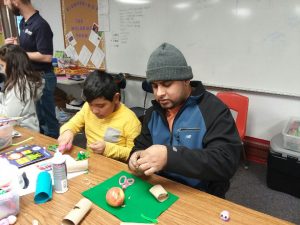
¡Adelante Juventud 4-H! is a new adventure and may not look like your traditional 4-H club. The core focus of this group serving the city of Arcadia and surrounding communities is to bring people together and build community. The group knows the importance of belonging and have set their goals to reflect that.
- To build a sense of community in Latinx youth in the area
- To provide life skills and academic support for youth
- To learn more about Latinx culture
- To connect with other 4-H communities in the area
Youth are encouraged to work together and are given opportunities to meet other youth in the area. They’re doing this by focusing on engaging Latinx youth in community based programs. The group reaches out to families through personal connections and trusted organizations like churches and the school district. The group holds monthly programs including art activities, animal open houses and traditional food classes. These programs help build cultural pride and allow different members of the community to share their skills with others.
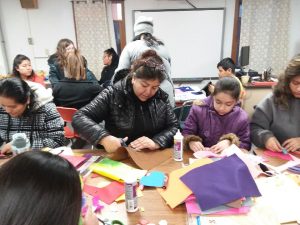
Adult volunteers help provide guidance to youth and encourage them to get involved. Youth hold officer roles and help organize and run meetings. They also develop and run activities for each meeting and lead other youth in the group. With the support of Extension staff, youth and adults make decisions together. “The relationships that are built by coming together for community activities demonstrate just how critical the idea of belonging is to 4-H clubs and that it can take many different forms based on the people involved,” says Trempealeau County Youth and Families Educator Adam Trunzo.
Independence
Opportunity to See Oneself as an Active Participant in the Future
Active Participation in the Future is present when:
- Youth members draw on their interests to help choose possible career paths and hobbies.
- Members look forward to being leaders in the organization or group.
- Youth make plans for the coming year.
- The club shares excitement about a future activity or opportunity.
Opportunity for Self-Determination
Opportunities for Self-Determination are present when:
- Youth members choose to participate in (or not participate in) projects, activities, or hobbies.
- Youth consider for themselves, “What went well? What would I do differently the next time?”
- Youth take on leadership and partnership roles to choose and plan activities, team events, and projects.
Spotlight on…Emerging Leaders in Waukesha County
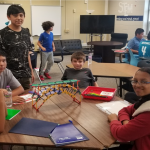
Sixty youth in grades 6-8 in Waukesha County have a new way to build the Essential Element of independence. An Extension-sponsored afterschool and summer program, called Emerging Leaders helps to build the motivation, understanding, skills, and attitudes that lead to success in middle school, high school, and beyond. The goals and the hard work to get there come from the youth; the support systems come from the program and the community mentors and role models who participate.
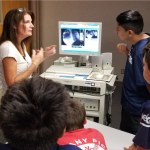
In addition to receiving academic support, youth participate in a variety of adventurous activities. Science, technology, engineering, and math (STEM) activities spark their interest in new careers while building life skills through hands-on challenges. Youth build leadership skills while they give back to the community through service projects. Campus tours and career shadowing help youth create a vision and a plan for the post-secondary and career options that help them achieve their personal goals.
Mastery
Opportunity for Mastery
The Opportunity for Mastery is present when:
- Members grow in projects that capture their interest.
- Youth eventually assist or mentor others in the same interest area or skill.
- Youth demonstrate what they have learned and the skill they have developed.
Engagement in Learning
Engagement in Learning is present when:
- Members of various ages, backgrounds, and abilities do community service projects.
- Members work together, plan activities, and enjoy participating in learning activities.
- Members grow and mature as they plan and lead organizational activities and events.
- Members choose to become leaders of the group.
Spotlight on…Menominee 4-H Regalia Making
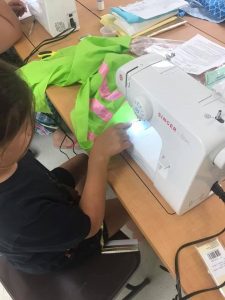
Youth in the Menominee area have been learning more about the art and culture of regalia making. The Menominee 4-H Regalia Making project has taken place the last three summers. About 13 youth and eight adult leaders participate. The Menominee Indian Tribal community is one of several reservations in the state of Wisconsin. They are unique in aspects of natural resources and deep rooted cultural connectedness. This community represents one of the 4-H clubs in the state of Wisconsin that is located on a reservation and run primarily by Native American youth and adults.
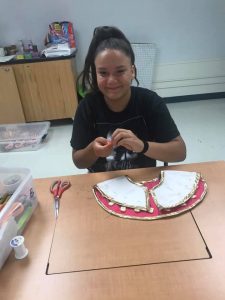
The goal of the project is to provide resources and instruction to make regalia. This includes cultural teaching from elders and community regalia makers who help with technique and design. An instructor guides youth through making their regalia from start to finish. But together, youth and adults work to create the regalia pieces.
The art of making regalia is a perfect example of mastery. Youth master sewing, craftsmanship, measuring, fabric selection and pattern cutting. Learning to sew is a great life skill that youth can use in other projects. While making regalia, youth also discover techniques like beading, painting and designing. Over the course of the project, youth and their families participate in interviewing local regalia makers, cultural events, hands-on learning and online research to document what they’ve completed in their project guidebook.
This project allows youth to explore cultural history and traditions. Each participant has individuality when it comes to their tribal affiliation, name and regalia style they choose. “Most participants are beginners, but some come with an understanding of how to make regalia all while learning together,” says Sofie Teller, Extension Educator, Extension Menominee County/Nation.
At the end of the project, youth help plan a regalia revue. Families and elders speak at the review and wish the youth well and encourage them to continue to improve their sewing and regalia making skills.
Generosity
Opportunity to Value and Practice Service to Others
The Element, Generosity, is present when:
- Youth joyfully serve others through community improvement projects.
- Youth show mutual support for others within the organization.
- Youth can identify community needs and design solutions to meet those needs.
Spotlight on…Buffalo County 4-H Countywide Service-Learning Project
Each year all 4-H clubs and 4-H afterschool groups in Buffalo County participate in the service-learning project, which engages most of the nearly 500 youth and 100 certified volunteers. The goals of the service-learning project across years are:
- Work together within 4-H clubs and across Buffalo County
- Develop new 4-H project skills
- Perform community service to meet a local community need
- Strengthen leadership skills and youth-adult partnerships
- Show empathy (compassion) for others
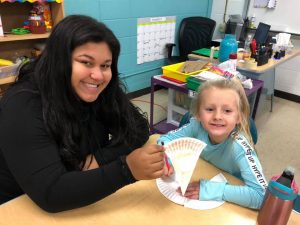
Each year there is a new emphasis and audience. There is also an additional learning goal focused on that direct emphasis. For example, when clubs worked to support backpack meals, 4-H members and volunteers participated in a poverty simulation and developed a better understanding of those who are food insecure in rural Buffalo County. Many clubs invited Latinx youth and adults to their club activities to help them include culturally appropriate foods and recipes in Spanish.
When clubs and groups built Free Little Libraries, they reviewed demographic maps and worked to place libraries in places with little or no access to free books. This also included learning about the literacy levels and needs of those who would be most likely to use the library. We provided resources in Spanish, texts for those working on their General Education Diploma (GED) or materials for youth with incarcerated family members. When the service-learning project’s audience was drug-endangered children, youth and adults learned about adverse childhood experiences. Then they worked to break down barriers that may prevent 4-H clubs from effectively supporting individuals who may have experienced trauma.
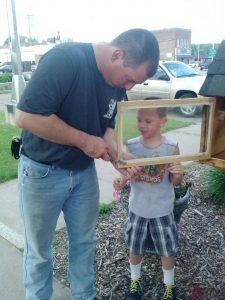
We chose the service-learning project emphasis and associated activities based on current issues and needs in Buffalo County. A group of youth and adults representing the Buffalo County 4-H Leaders Association work in committee to carry out the Plan, Action, Reflection, and Evaluation (PARE) service-learning model. Youth are involved in selecting the project, coaching younger members completing the project, communicating about what they’ve learned, and reflecting on the success of the project.
Visit the website to learn more about the Buffalo County 4-H Countywide Service-Learning Project.
Using the four Essential Elements together, 4-H professionals and volunteers are able to help youth develop into adults who will have positive impacts on their club, community, country and world!





